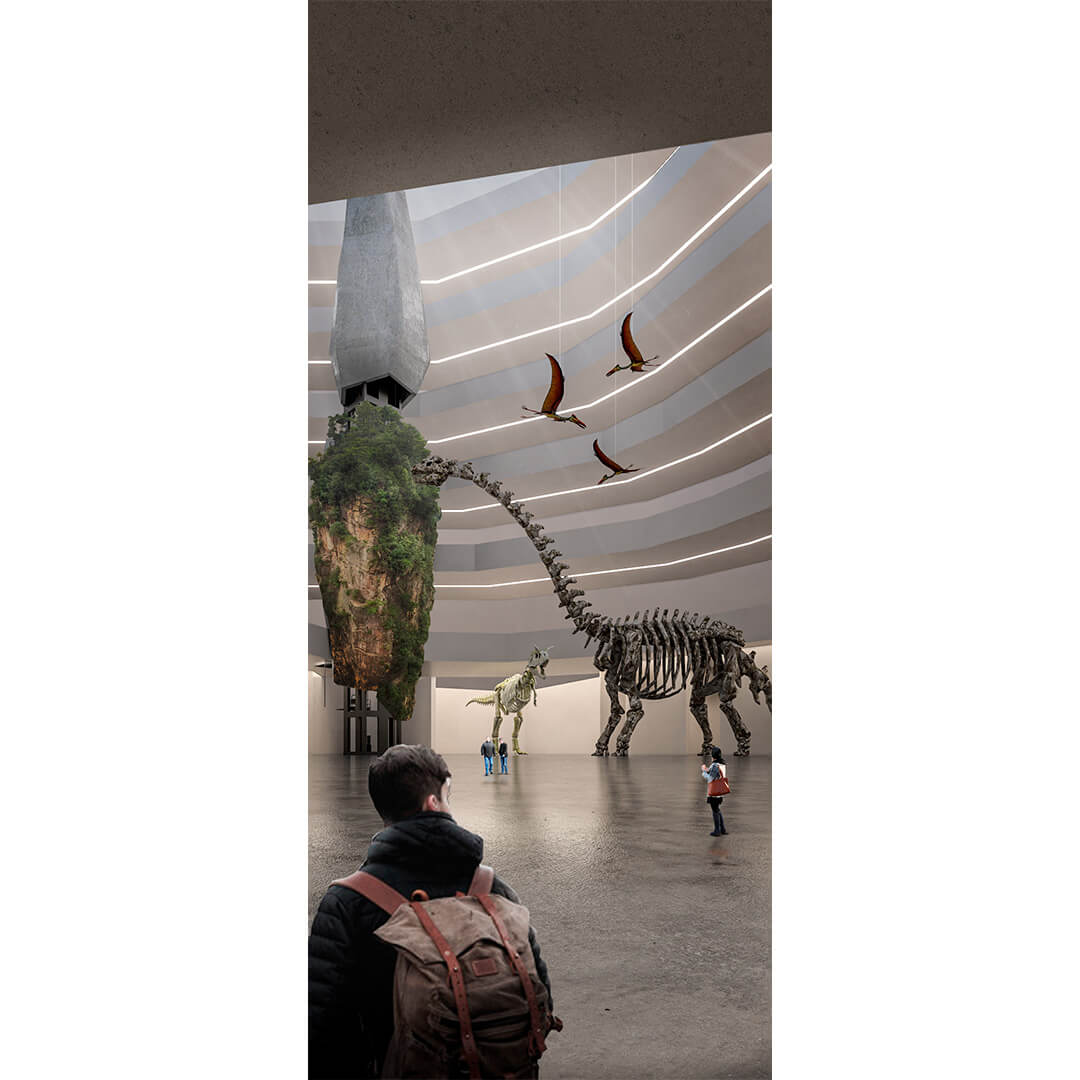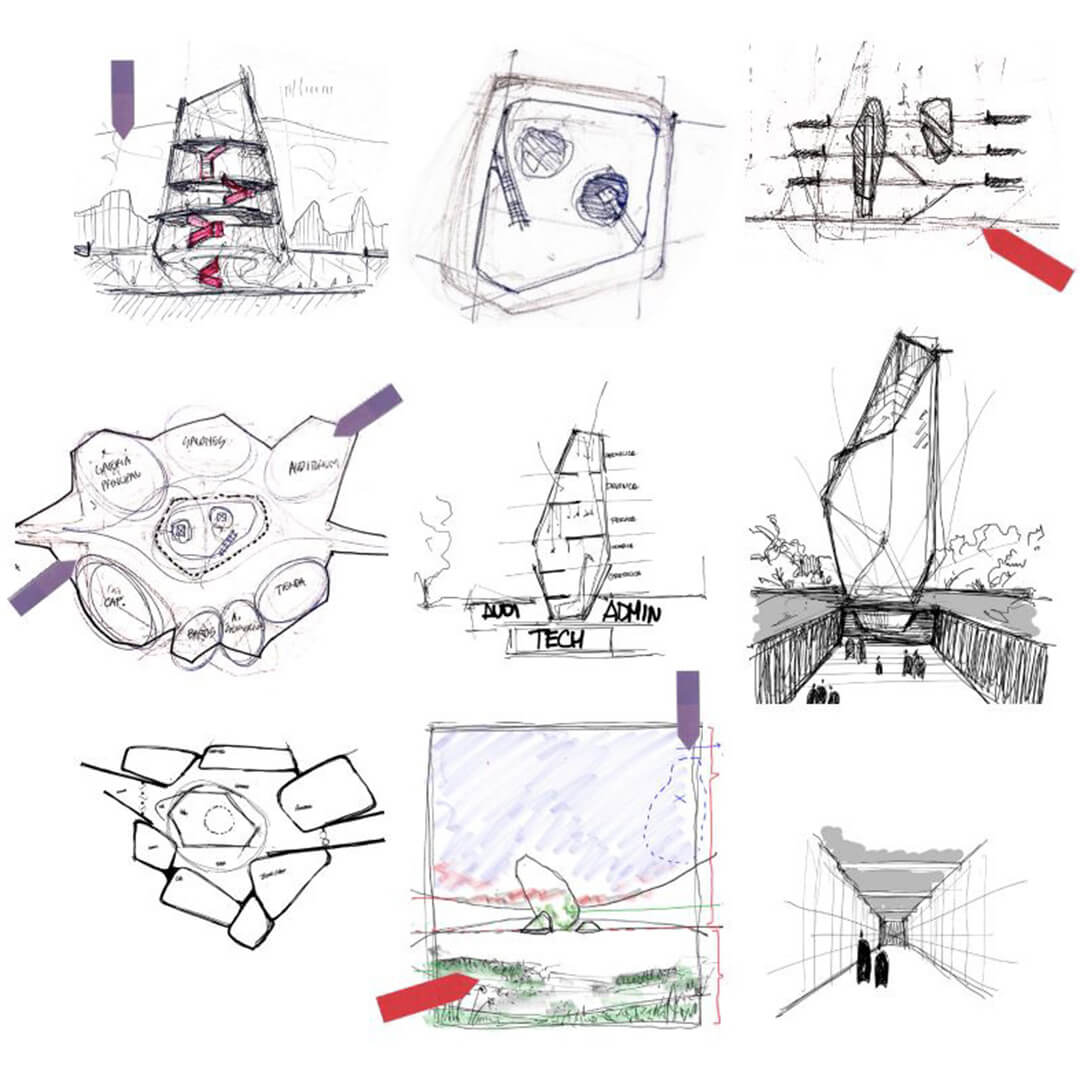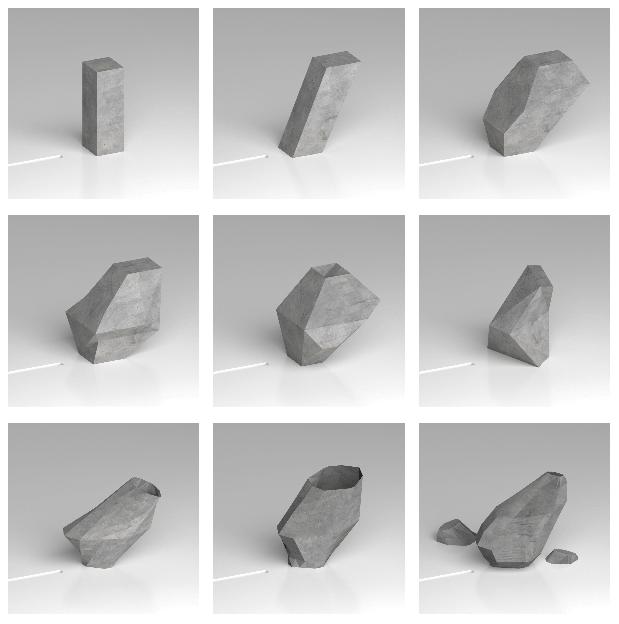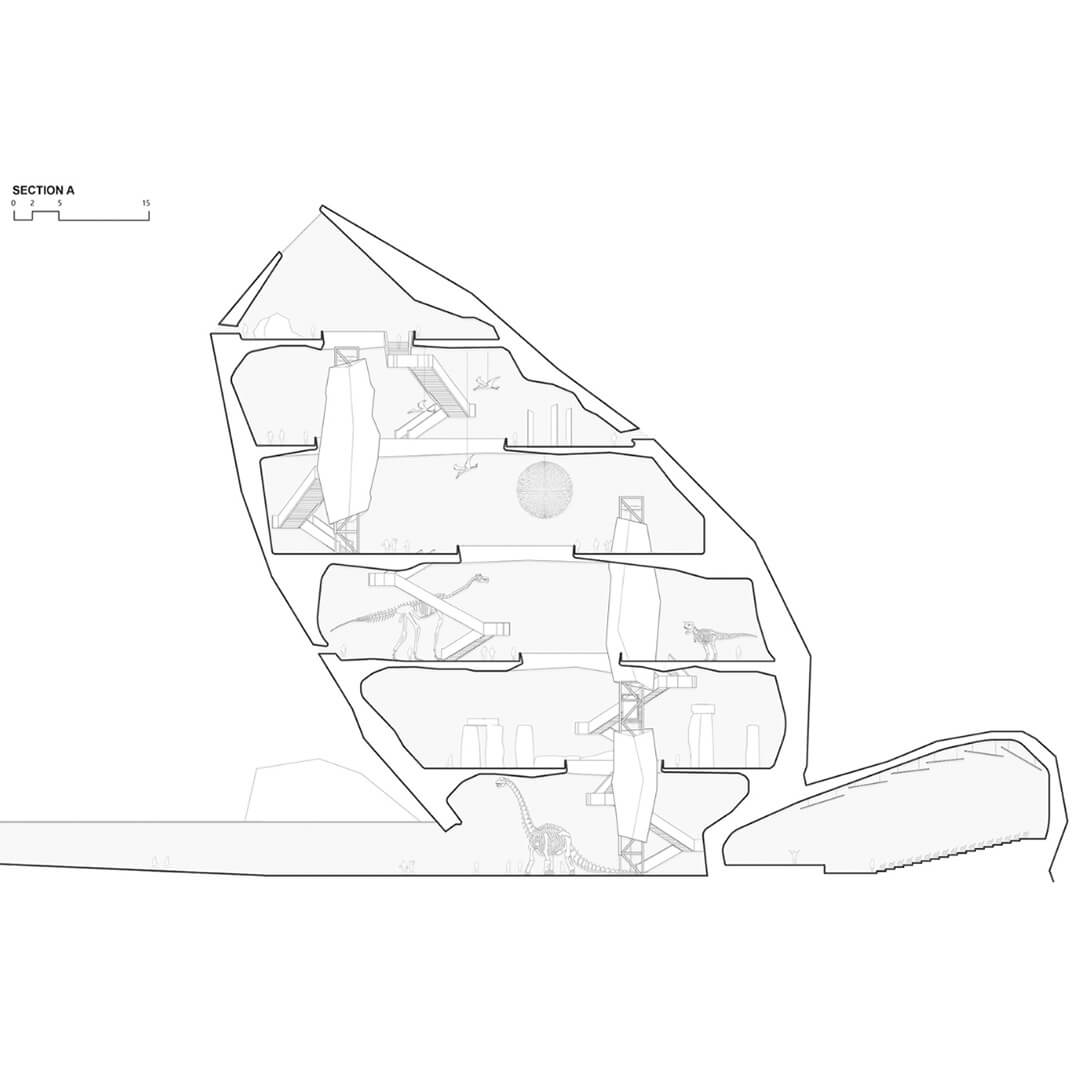Carlos Góndola+David Young+Gabriel Atencio+José Delgado
This museum invites visitors to explore the inside of a rock, which symbolizes the solidity and longevity of nature, but also its fragility and vulnerability to human action.
Millions of years. Today, we found rocks, grass, and water. We hear trees talking, and grass dancing. A giant rock still stands from the very first impact. But in this land, there are no traces of mankind’s creation, only one rock that lives between the nature and brings back to life memories from the land before time. The Impact Museum is a unique and thought- provoking architectural masterpiece that explores the concept of the five great extinctions that have occurred on Earth throughout its history. The building’s main lobby is designed to resemble the shape of an asteroid impact, with its jagged, irregular edges and central crater-like depression.
As visitors enter the museum, they are immediately struck by the grandeur of the lobby, which serves as the central hub for the rest of the museum’s exhibits. Above the main lobby, suspended from the ceiling, is a large rock, representing the asteroid that is believed to have caused the mass extinction that wiped out the dinosaurs. The Extinction Museum is a unique and thought- provoking architectural masterpiece that explores the concept of the five great extinctions that have occurred on Earth throughout its history. The building’s main lobby is designed to resemble the shape of an asteroid impact, with its jagged, irregular edges and central crater-like depression.
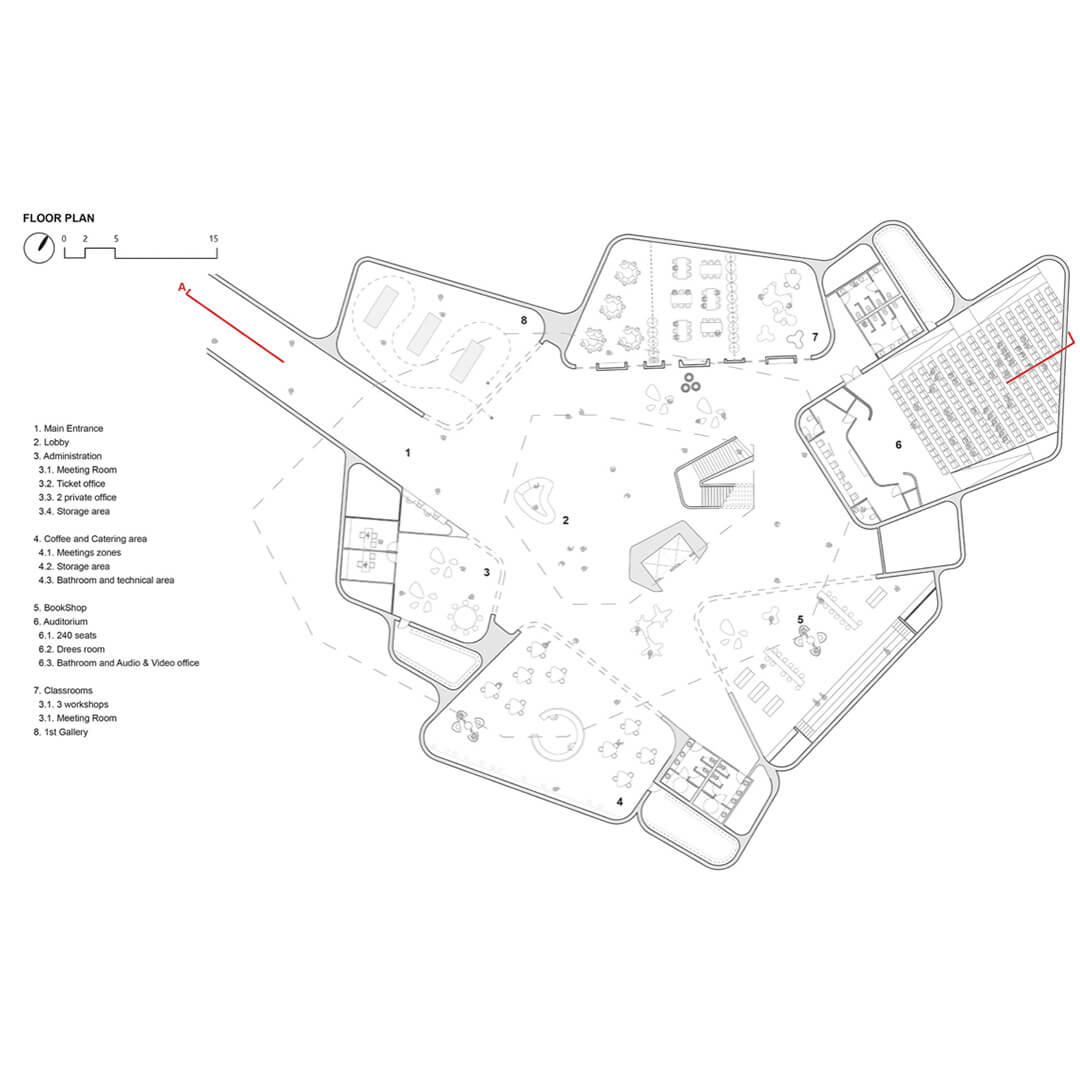
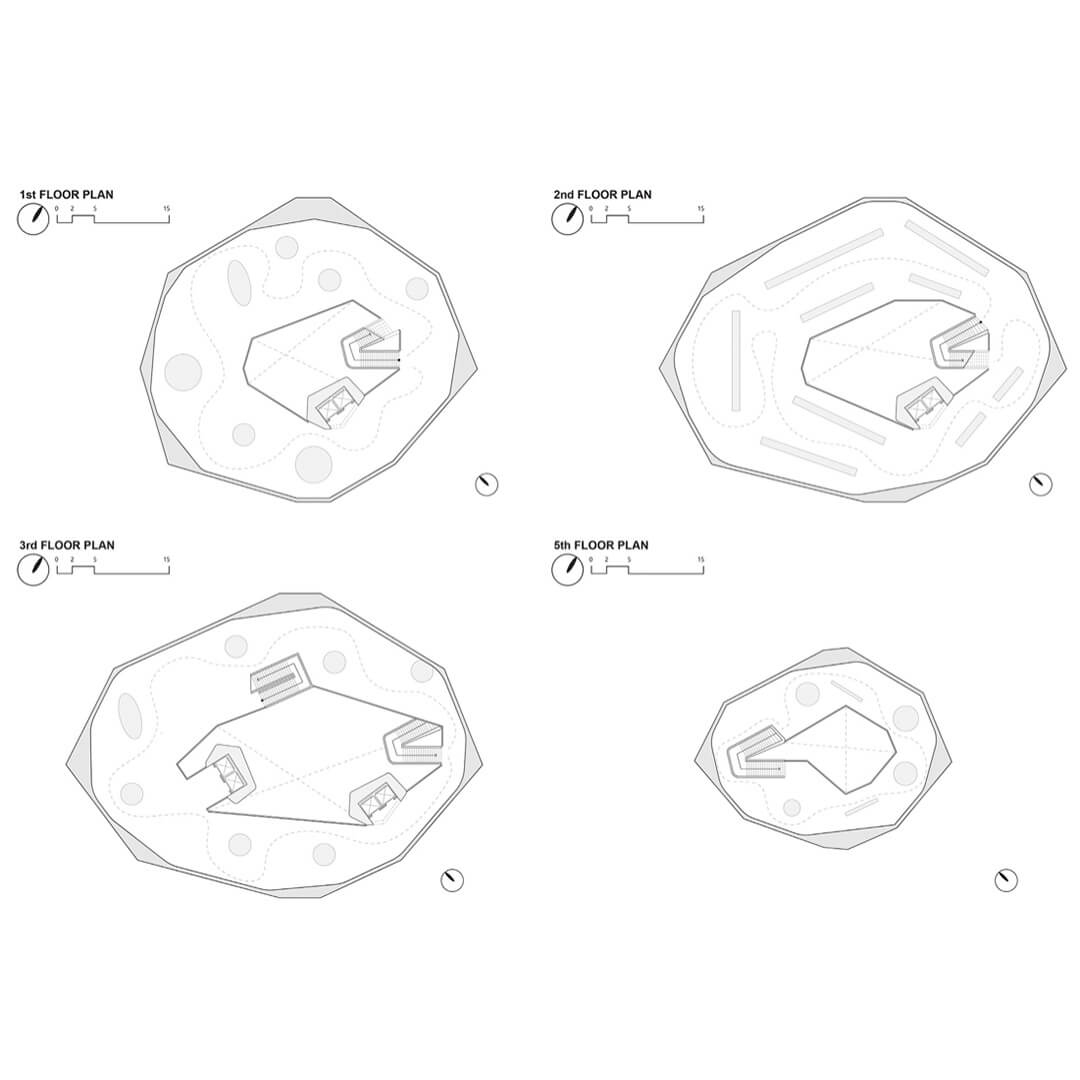
As visitors enter the museum, they are immediately struck by the grandeur of the lobby, which serves as the central hub for the rest of the museum’s exhibits. Above the main lobby, suspended from the ceiling, is a large rock, representing the asteroid that is believed to have caused the mass extinction that wiped out the dinosaurs. This impressive rock serves as the gateway to the five floors above, each of which is dedicated to one of the five great extinctions. Each floor is designed to give visitors an immersive and educational experience, with interactive exhibits, artifacts, and multimedia displays that explore the causes, effects, and aftermath of each extinction event.
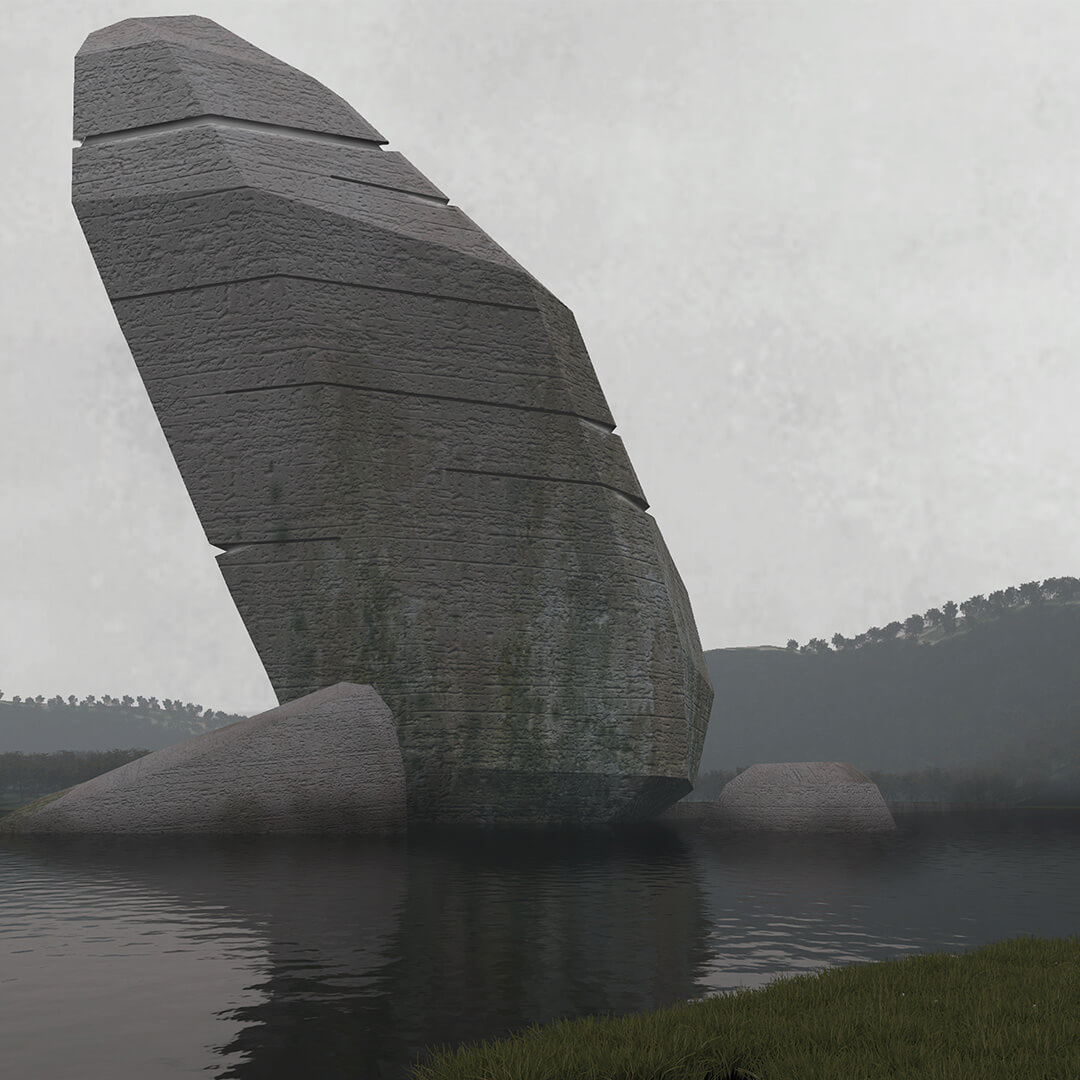
The elevators are designed to resemble the organic forms of nature and integrate seamlessly into the building’s structure. This design aims to create a harmonious relationship between technology and the environment, reminding us of the importance of sustainability and respect for the natural world. The use of natural materials and colors, in addition to state-of-the-art technology, adds to the unique and inspiring experience for visitors. The design of the elevators serves as a reminder of the need for humans to work in harmony with nature and not against it.
Authors: Carlos Góndola+David Young+Gabriel Atencio+José Delgado.
Location: Nápoles, Italy.
Year: 2023
Competition: Extinction Museum.
